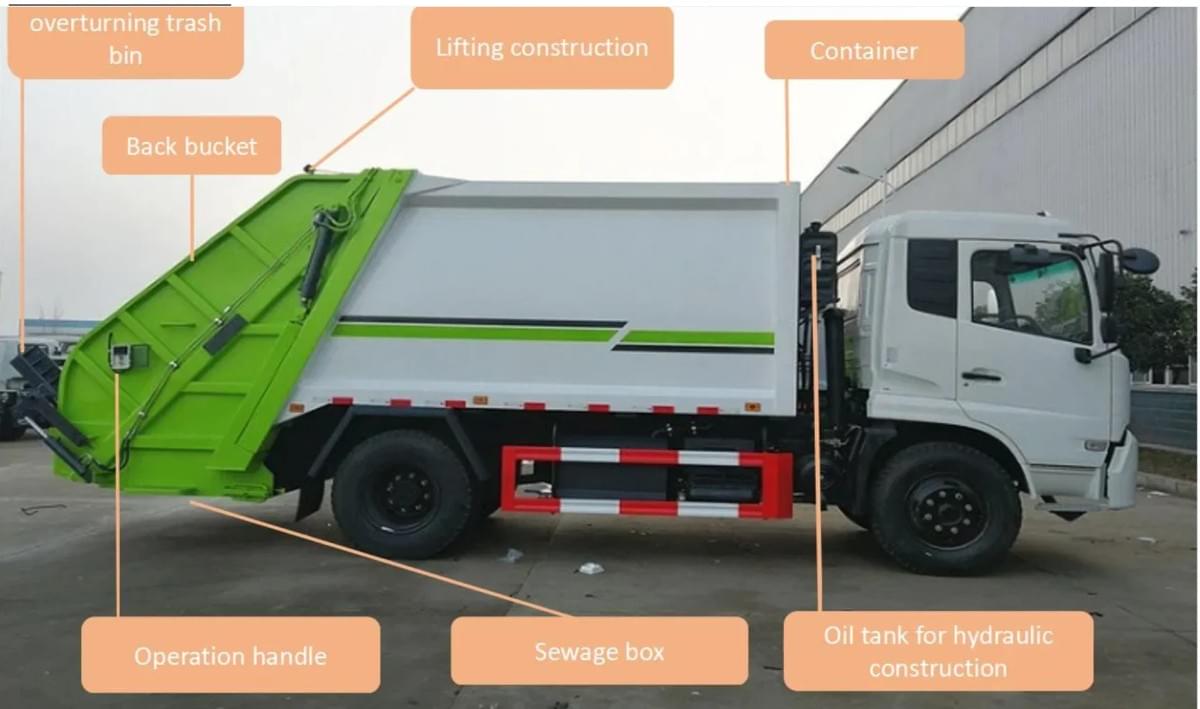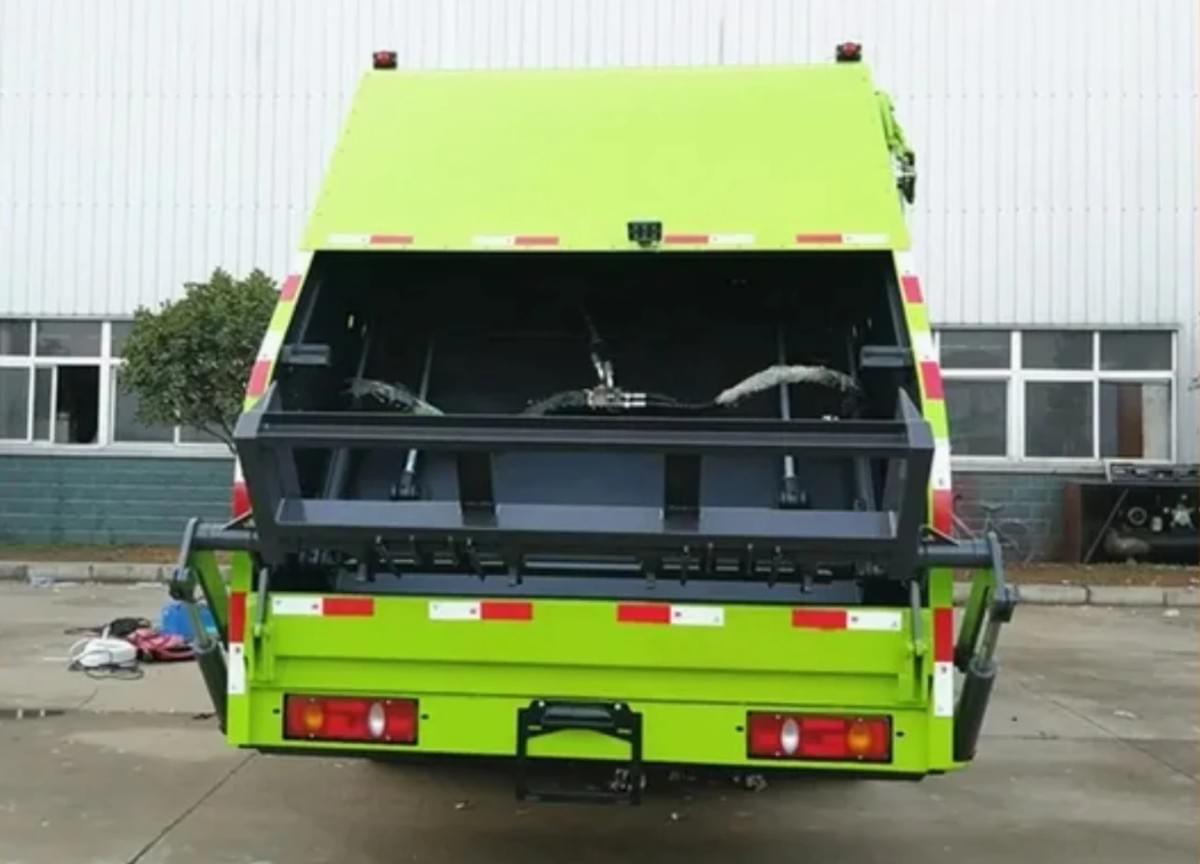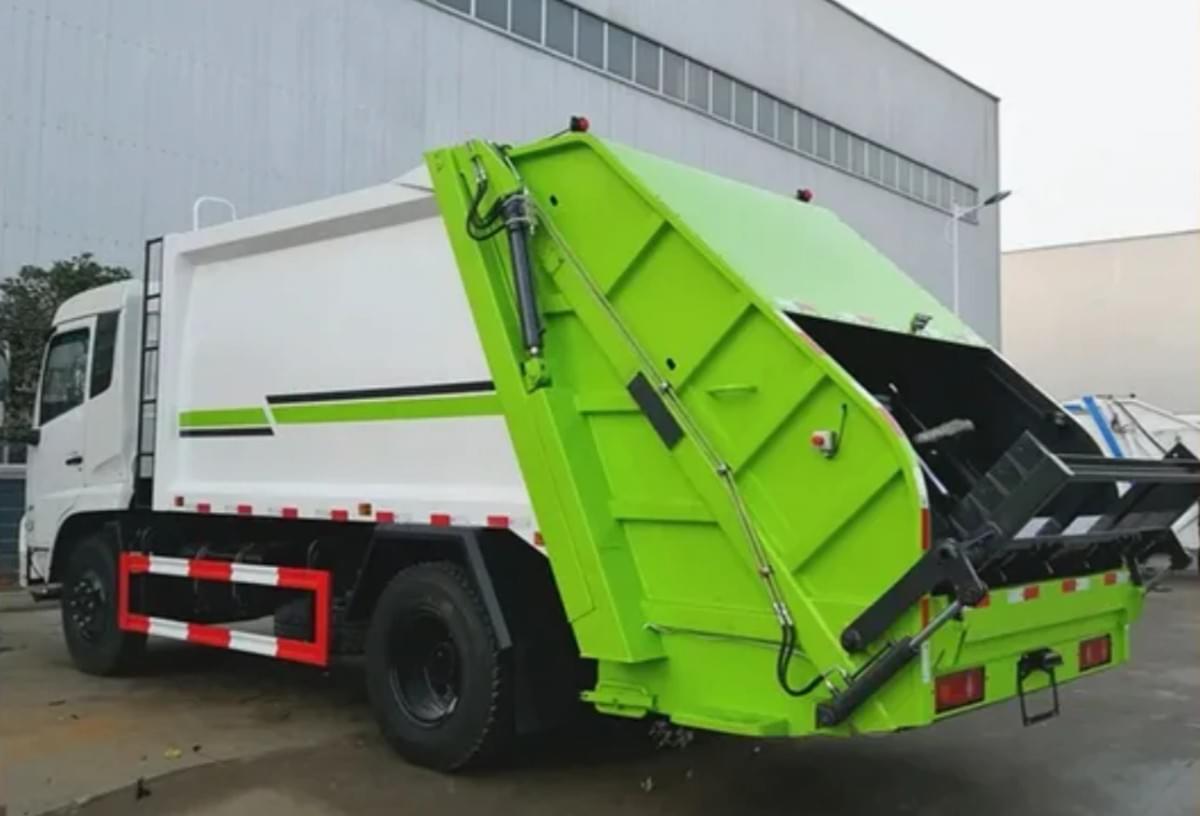In today’s fast-paced waste management industry, choosing the right Waste Collector Truck isn’t just a purchase—it’s an investment in operational efficiency, cost savings, and long-term sustainability. Whether you’re a municipal agency tasked with keeping cities clean or an industrial facility managing heavy-duty waste, the right Waste Collector Truck can transform how you handle daily operations, reduce downtime, and meet local regulatory standards. This guide dives deep into everything you need to know to select, compare, and invest in a Waste Collector Truck that aligns with your unique needs—from understanding core features to finding the best local deals.
1. Why Your Waste Collector Truck Choice Matters
The impact of a well-chosen Waste Collector Truck extends far beyond basic waste hauling. It directly influences your team’s productivity, your environmental footprint, and your bottom line. Let’s break down the critical reasons why this decision requires careful consideration:
Operational Efficiency
A mismatched Waste Collector Truck can slow down routes, increase labor hours, and create unnecessary delays. For example, a large front-loading Waste Collector Truck designed for commercial dumpsters will struggle to navigate narrow residential streets, leading to missed pickups or extended route times. On the other hand, a compact rear-loading Waste Collector Truck optimized for urban areas will zip through tight spaces, reducing idle time and boosting daily collection capacity. Advanced features like GPS route optimization (now standard in most modern Waste Collector Trucks) further enhance efficiency by mapping the shortest, most fuel-efficient paths—cutting down on miles driven and labor costs.
Regulatory Compliance
Local and regional waste management laws vary widely, and your Waste Collector Truck must meet these requirements to avoid fines or service disruptions. Many cities mandate low-emission engines for Waste Collector Trucks to reduce air pollution, while industrial zones may require trucks with specialized sealed containers to prevent hazardous waste leaks. Choosing a Waste Collector Truck that’s pre-equipped to comply with these regulations saves you from costly retrofits later. For instance, Haisen’s compressed Waste Collector Truck line includes eco-friendly engines that meet strict EPA standards, ensuring you stay compliant without extra investments.
Long-Term Cost Savings
While a high-quality Waste Collector Truck may have a higher upfront cost, it delivers significant savings over time. Durable components (like reinforced hydraulic systems in heavy-duty Waste Collector Trucks) reduce maintenance frequency, while compaction technology minimizes the number of trips to landfills—slashing fuel expenses. A study by waste management industry analysts found that fleets using compactor Waste Collector Trucks save up to 30% on fuel costs annually compared to standard models. Additionally, reliable Waste Collector Trucks have longer lifespans: a well-maintained new Waste Collector Truck can operate for 10–15 years, while a poorly chosen used model may require replacement in 3–5 years.
2. Key Features of a High-Performance Waste Collector Truck
Not all Waste Collector Trucks are created equal. The best models combine durability, functionality, and technology to meet your specific use case. Below are the non-negotiable features to prioritize when evaluating a Waste Collector Truck:
Compaction Systems
The compaction mechanism is the heart of any efficient Waste Collector Truck. It reduces waste volume, allowing the truck to carry more refuse per trip. For industrial users handling construction debris or heavy materials, look for a Waste Collector Truck with a high-pressure compaction system (1,500+ psi) that can crush dense waste like concrete or metal scraps. Residential and municipal users may prefer a moderate-pressure system (800–1,200 psi) that balances compaction power with gentler handling of household waste. Haisen’s compressed Waste Collector Truck, for example, uses a dual-stage compaction system that maximizes volume while preventing jams—critical for uninterrupted daily routes.
Hydraulic Lifting Mechanisms
Hydraulic systems power bin lifting, door opening, and compaction in Waste Collector Trucks—so reliability here is non-negotiable. Look for a Waste Collector Truck with heavy-duty hydraulic cylinders and a backup pump (to avoid breakdowns mid-route). For one-person residential routes, side-loading Waste Collector Trucks with automated hydraulic arms are ideal: they eliminate manual lifting, reduce worker fatigue, and speed up pickups. Front-loading Waste Collector Trucks (common in commercial settings) use hydraulic forks to lift large dumpsters, so check that the system can handle your average dumpster weight (typically 2,000–5,000 lbs).
Storage Capacity & Body Design
Storage capacity (measured in cubic yards) should match your daily waste volume. A small residential route may only need a 10–15 cubic yard Waste Collector Truck, while an industrial site could require 25–30 cubic yards or more. Body design also matters:
- Rear-loading bodies: Compact and maneuverable, perfect for narrow urban streets.
- Front-loading bodies: Large and efficient for commercial dumpsters, but require more space to operate.
- Side-loading bodies: Optimized for one-person teams, with arms that reach curbside bins.
Haisen’s Waste Collector Truck line offers all three designs, with corrosion-resistant steel bodies that withstand harsh weather and heavy use—extending the truck’s lifespan.
Technology Integration
Modern Waste Collector Trucks leverage technology to streamline operations. Essential tech features include:
- GPS tracking: Monitors route progress, vehicle location, and driver behavior (e.g., idling time).
- Load sensors: Alerts drivers when the truck is full, preventing overloading (which damages the vehicle and violates regulations).
- Maintenance alerts: Sends notifications for oil changes, hydraulic fluid checks, and filter replacements—reducing unexpected downtime.
Many Waste Collector Trucks now integrate with fleet management software, allowing you to analyze data (e.g., fuel usage, collection times) and optimize routes over time.

3. Types of Waste Collector Trucks: Which Is Right for You?
The market offers a range of Waste Collector Trucks, each designed for specific environments and waste types. Understanding the differences will help you narrow down your options:
Rear-Loading Waste Collector Trucks
Best for: Residential areas, narrow streets, small to medium waste volumes.
Rear-loading Waste Collector Trucks are the most common choice for municipal residential routes. Their compact design allows them to navigate tight spaces (e.g., alleyways or downtown neighborhoods) that larger trucks can’t access. Most models have a manual or semi-automated lifting system for curbside bins, making them ideal for areas with mixed bin sizes. While their storage capacity is smaller (10–20 cubic yards), their maneuverability makes them a top pick for urban settings. For example, a city with historic districts and narrow roads would benefit from a rear-loading Waste Collector Truck to avoid damaging infrastructure or blocking traffic.
Front-Loading Waste Collector Trucks
Best for: Commercial areas, industrial sites, large dumpsters.
Front-loading Waste Collector Trucks are built for heavy-duty use. They feature hydraulic forks at the front that lift large commercial dumpsters (2–8 cubic yards) and empty them into the truck’s body. Their storage capacity (20–30 cubic yards) and fast dumping speed make them perfect for shopping centers, warehouses, and construction sites. However, they require more space to operate—you’ll need a wide street or parking lot to maneuver the forks. A retail park with 50+ stores, for instance, would rely on front-loading Waste Collector Trucks to handle daily commercial waste efficiently.
Side-Loading Waste Collector Trucks
Best for: One-person teams, residential routes, high-volume pickups.
Side-loading Waste Collector Trucks are designed for speed and efficiency. They have an automated arm on the side that grabs curbside bins, lifts them, and empties them into the truck—all without the driver leaving the cab. This makes them ideal for large residential neighborhoods where one driver can handle 500+ pickups per day. Their storage capacity (15–25 cubic yards) balances volume and maneuverability, and many models include a compaction system to maximize load size. A suburban area with 1,000+ homes would benefit from side-loading Waste Collector Trucks to reduce labor costs and speed up routes.
Specialized Waste Collector Trucks
For unique waste types, specialized Waste Collector Trucks are essential:
- Recycling trucks: Have separate compartments for paper, plastic, and glass, with gentle compaction to avoid damaging recyclables.
- Hazardous waste trucks: Feature sealed, leak-proof bodies and specialized hydraulic systems to handle toxic or flammable materials.
- Construction debris trucks: Have reinforced bodies and high-pressure compaction to crush concrete, wood, and metal scraps.
If your operation involves multiple waste types, consider a dual-purpose Waste Collector Truck (e.g., a recycling-compactor combo) to avoid investing in separate vehicles.
4. Spotlight: Haisen’s Compressed Waste Collector Truck
When it comes to innovation in waste management, Haisen’s compressed Waste Collector Truck stands out as a industry leader. Designed for both municipal and industrial use, this truck combines durability, efficiency, and sustainability to solve common Waste Collector Truck pain points.
Key Technologies of Haisen’s Truck
Haisen’s Waste Collector Truck is built around three core technologies:
- Dual-Stage Compaction System: Unlike standard single-stage systems, this technology first crushes waste horizontally, then vertically—reducing volume by up to 60%. This means fewer trips to landfills, lower fuel costs, and higher daily collection capacity.
- Smart Monitoring Dashboard: A digital display in the cab shows real-time data: load weight, hydraulic pressure, fuel level, and maintenance alerts. Drivers can adjust compaction settings on the fly, and fleet managers can access data remotely to track performance.
- Eco-Friendly Hydraulic System: The truck uses biodegradable hydraulic fluid and a low-emission engine (meets EPA Tier 4 standards) to reduce environmental impact. It also has a regenerative braking system that recharges the battery while stopping—saving energy.

Real-World Benefits
Municipalities and businesses using Haisen’s Waste Collector Truck report significant improvements:
- 30% fewer landfill trips: Thanks to the dual-stage compaction system, a single Haisen truck can handle the same volume as two standard trucks.
- 25% lower maintenance costs: Reinforced hydraulic cylinders and corrosion-resistant body panels reduce wear and tear.
- 15% fuel savings: The low-emission engine and regenerative braking system cut fuel consumption.
One city in the Midwest replaced its old fleet with Haisen Waste Collector Trucks and saved $200,000 in annual fuel and maintenance costs—while increasing daily collection capacity by 40%.

Applications
Haisen’s Waste Collector Truck is versatile enough for:
- Residential routes: Maneuvers through narrow streets and handles curbside bins with ease.
- Industrial sites: Crushes heavy debris (e.g., metal scraps, construction waste) without jamming.
- Recycling operations: Optional separate compartments for recyclables, with gentle compaction to preserve material quality.
5. Understanding Waste Collector Truck Prices
Price is a critical factor when investing in a Waste Collector Truck, but it’s important to look beyond the upfront cost. Below is a breakdown of what influences prices, how new vs. used models compare, and how to find the best value.
Factors That Affect Price
- Size & Capacity: Smaller rear-loading Waste Collector Trucks (10–15 cubic yards) start at $80,000–$120,000, while large front-loading models (25–30 cubic yards) can cost $200,000–$350,000.
- Features: Advanced tech (GPS, load sensors) adds $5,000–$15,000, while specialized systems (hazardous waste handling) can increase prices by $20,000+.
- Brand: Reputable brands like Haisen, Mack, or Peterbilt charge a premium (10–20% higher) for reliability and service support.
- New vs. Used: A 1–3 year old used Waste Collector Truck costs 30–50% less than a new model. For example, a new Haisen compressed Waste Collector Truck is $180,000–$220,000, while a 2-year-old model in good condition is $100,000–$140,000.
New vs. Used: Which Is Better?

Recommendation: If you have a long-term (5+ year) plan and need reliable performance, invest in a new Waste Collector Truck. If you’re on a tight budget or need a temporary solution (e.g., a construction project), a used model (with a full maintenance history) is a smart choice. Always hire an independent mechanic to inspect a used Waste Collector Truck—they can spot hidden issues like hydraulic leaks or engine wear.
How to Get the Best Deal
- Buy during off-seasons: Waste Collector Truck dealers often offer discounts in winter (slow season for waste management) to clear inventory.
- Negotiate with dealers: Ask for free add-ons (e.g., GPS installation, extended warranty) instead of price cuts—dealers may be more flexible on extras.
- Consider financing: Many manufacturers (including Haisen) offer low-interest financing for new Waste Collector Trucks, spreading costs over 5–7 years.
- Check government surplus sales: Municipalities often sell old Waste Collector Trucks at auctions for 40–60% below retail. These trucks are usually well-maintained (since they’re part of public fleets).
6. Finding a Waste Collector Truck for Sale (Local & Online)
Once you’ve decided on the type and features you need, the next step is to find a Waste Collector Truck for sale. Below are the best places to look, along with tips to avoid scams and ensure quality.
Top Places to Buy
1.Specialized Commercial Vehicle Dealers: Dealers that focus on trucks (e.g., Haisen authorized dealers, Peterbilt locations) have the largest selection of new and used Waste Collector Trucks. They also offer warranties, financing, and after-sales service—critical for long-term support.
2.Online Marketplaces:
- TruckPaper: The leading platform for commercial trucks, with thousands of Waste Collector Truck listings. You can filter by location, price, and features (e.g., “compactor rear-loader”).
- eBay Motors: Good for used models, but always verify the seller’s reputation (look for 100+ positive reviews) and request a video walkthrough of the truck.
- Craigslist: Best for local deals, but meet the seller in person and inspect the truck thoroughly. Avoid sellers who ask for payment upfront.
3.Government & Municipal Auctions: Websites like GovDeals or local county auction sites sell surplus Waste Collector Trucks from cities and states. These trucks are often low-mileage and well-maintained (since municipalities follow strict maintenance schedules).
4.Industry Trade Shows: Events like the WasteExpo showcase the latest Waste Collector Truck models from brands like Haisen. You can test-drive trucks, talk to manufacturers, and get exclusive show discounts.

Tips for Evaluating a Waste Collector Truck
Before buying, take these steps to ensure you’re getting a quality vehicle:
- Inspect the Body & Frame: Look for rust, dents, or cracks—these indicate neglect. Check the floor of the waste compartment for holes (common in older trucks that hauled sharp debris).
- Test the Hydraulic System: Turn on the truck and operate the lifting arms and compaction mechanism. They should move smoothly without squealing or delays. Check for hydraulic fluid leaks (look under the truck for wet spots).
- Review Maintenance Records: Ask for service logs to see if the truck was serviced regularly. Key records include oil changes, hydraulic fluid replacements, and engine tune-ups. A truck with incomplete records is a red flag.
- Take a Test Drive: Drive the truck on both city streets and highways to check for engine performance (no unusual noises), braking (smooth stops), and maneuverability (especially important for narrow routes).
- Hire an Independent Mechanic: A mechanic who specializes in commercial trucks can spot issues you might miss (e.g., transmission problems, hidden engine damage). The $200–$300 cost is worth avoiding a $10,000 repair later.
Why Local Service Matters
When buying a Waste Collector Truck, prioritize local sellers or dealers. Here’s why:
- Fast Maintenance: If your truck breaks down, a local dealer can send a technician within hours—minimizing downtime. A remote seller may take days to respond.
- Regional Expertise: Local dealers understand local regulations (e.g., emission standards, weight limits) and can recommend the right Waste Collector Truck for your area. For example, a dealer in a snowy region may suggest a Waste Collector Truck with snow tires or a heated hydraulic system.
- Relationship Building: Working with a local dealer means you’ll have a point of contact for future needs (e.g., parts, upgrades). Many dealers offer loyalty discounts for repeat customers.
7. Final Steps to Buy Your Waste Collector Truck
You’ve done your research, found a few options, and inspected the trucks—now it’s time to finalize the purchase. Follow these steps to ensure a smooth process:
1.Negotiate the Price: Use your research (e.g., average prices for similar models) to negotiate. If buying new, ask for a discount on add-ons (e.g., GPS, extended warranty). If buying used, point out any issues (e.g., rust, worn tires) to lower the price.
2.Review the Contract: Read the contract carefully to ensure it includes:
- Warranty details (what’s covered, length).
- Financing terms (interest rate, monthly payment, payoff period).
- Delivery date (if the truck needs to be shipped).
- Any guarantees (e.g., “truck passes inspection within 30 days”).
3.Arrange Insurance: Contact your commercial insurance provider to get coverage for the Waste Collector Truck. You’ll need liability insurance (to cover accidents) and physical damage insurance (to cover theft or repairs).
4.Plan for Training: If your team is new to the model (e.g., a side-loading Waste Collector Truck), ask the dealer for training. Proper training reduces accidents and ensures the truck is used efficiently.
5.Schedule Regular Maintenance: Set up a maintenance schedule with your local dealer (e.g., oil changes every 5,000 miles, hydraulic fluid checks every 3 months). This will extend the truck’s lifespan and prevent breakdowns.
Conclusion: Invest in the Right Waste Collector Truck Today
Your Waste Collector Truck is the backbone of your waste management operation—choosing the right one will save you time, money, and headaches for years to come. By understanding your needs (environment, waste type, volume), prioritizing key features (compaction, hydraulics, tech), and shopping wisely (local dealers, verified sellers), you can find a Waste Collector Truck that meets your goals.
Whether you’re a municipality upgrading your fleet or a business investing in your first truck, Haisen’s compressed Waste Collector Truck offers the perfect blend of efficiency, durability, and sustainability. With its advanced compaction system, smart monitoring, and eco-friendly design, it’s a choice that pays off in lower costs and better performance.

